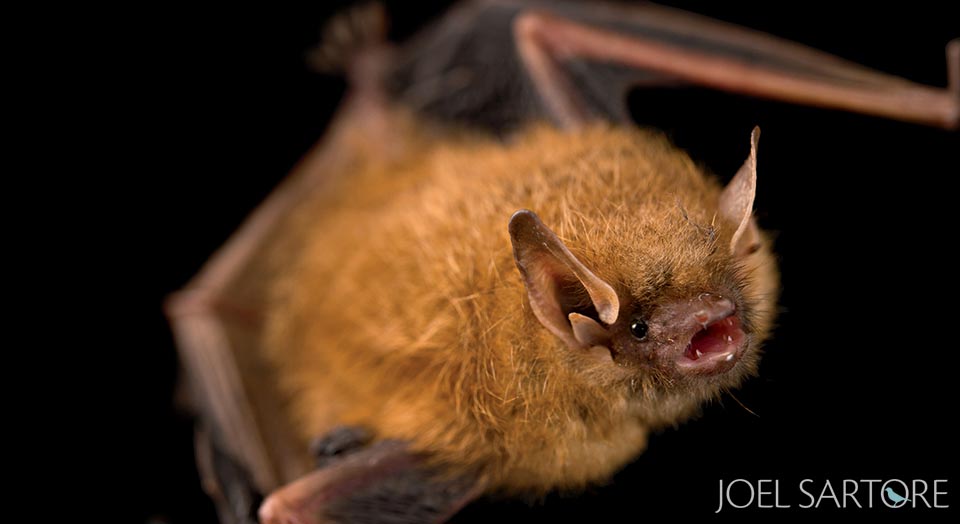Tricolored Bat
 Given their fluttery flight pattern and tiny size, tricolored bats are often mistaken for moths as they hunt at the forest edge near streams. But—even though these bats weigh no more than a quarter of an ounce—when it comes to taking a bite out of bugs, they pack enormous appetites.
Given their fluttery flight pattern and tiny size, tricolored bats are often mistaken for moths as they hunt at the forest edge near streams. But—even though these bats weigh no more than a quarter of an ounce—when it comes to taking a bite out of bugs, they pack enormous appetites.
Using their tails and wings as pouches, they nab insects on the fly. In just 30 minutes they can eat 25 percent of their body weight. While they satiate their hunger, they provide us with an irreplaceable ecological and economic service, protecting crops from pest damage and humans from insect-borne diseases.
Until recently, these bats—formerly known as eastern pipistrelles—were one of the most common bats found in eastern forests from Canada to Central America. Today, the tricolored bat is one of the species most severely harmed by white-nose syndrome, the fungal disease that’s been devastating North American hibernating bat populations for a decade. Tricolored bats hibernate earlier in the fall than other species and are among the last to reemerge.
Tragically, this disease is now in 29 states and five Canadian provinces, overlapping with most of the bat’s range. The fungus that causes white-nose syndrome has also been confirmed in three more states. In the Northeast, the tricolored bat population has plummeted by 98 percent. Overall, scientists estimate the population has declined by a third.
And white-nose syndrome is not the only threat. Like other bat species, they must contend with human disturbances at hibernation and roost sites, habitat loss, pesticides, wind turbines and climate change.
It’s why going to bat for their protection under the Endangered Species Act is so urgent and imperative.
Making a Difference
With the tricolored bat in imminent danger of extinction, Defenders petitioned the U.S. Fish and Wildlife Service in June to protect the bat under the Endangered Species Act. “The tricolored bat needs immediate, meaningful federal protections before it’s too late,” says Jane Davenport, Defenders’ senior staff attorney.
Find out more at defenders.org/bats.
Only select articles from Defenders are available online. To receive 4 issues annually of the full award-winning magazine, become a member of Defenders of Wildlife!

